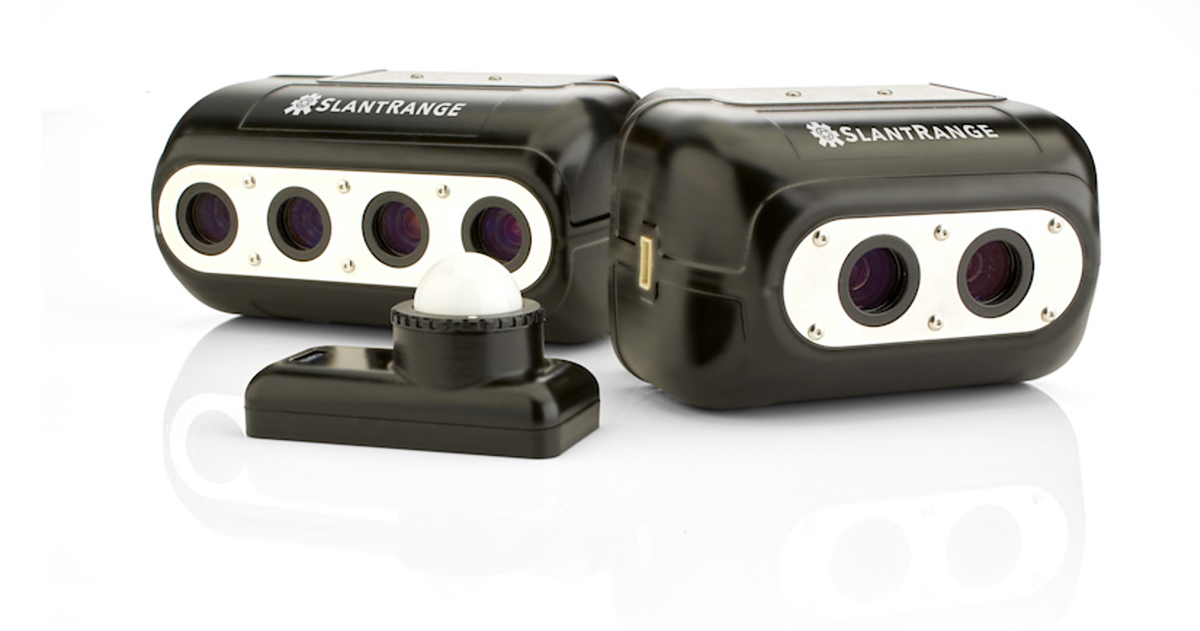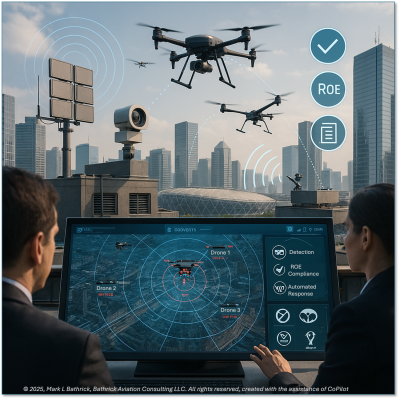DroneDeploy and SLANTRANGE demonstrated at the Commercial UAV Expo how the new “GeoTIFF Upload” feature allows complete SLANTRANGE maps to be directly uploaded to a user’s DroneDeploy account.
The “marriage” between SLANTRANGE and DroneDeploy offers what Anya Lamb, Marketing Manager at DroneDeploy calls ”a unique solution for agriculture”. SLANTRANGE has pioneered a smarter approach to agricultural intelligence by delivering valuable new types of crop information for more efficient use of farming resources and greater control and predictability of outputs. According to Lamb, the company “has made waves in the agriculture community with their calibrated multispectral sensors and rapid off-line image processing”.DroneDeploy, on the other hand, has become the preferred central place to view, analyze and share your map data. DroneDeploy provides a suite of mobile and desktop tools that allow drone operators to plan and execute their automated flights, upload the imagery collected from the drone’s camera to cloud-based servers to be processed into large area maps, and to analyze the 2D maps and 3D models.Making both systems work together seemed like a good strategy, but there was a problem. The maps made using other tools are not compatible with the platform. DroneDeploy found the solution through its new GeoTiff Upload tool, which allows users to upload completed maps that have been generated using other software tools. Now customers can easily upload 2D maps as GeoTiffs to their account and leverage most of the same measurement, collaboration and sharing features as if the map had been originally processed using DroneDeploy. All SLANTRANGE data products, including maps of plant population, weed locations, stress conditions, crop canopy closure, yield prediction, and user-created custom filters are fully compatible with this new upload feature.“SLANTRANGE strives to deliver the most accurate, timely, and relevant crop information products to agriculture. The DroneDeploy platform adds new levels of efficiency and accessibility to that offering, so agricultural drone operators can be more effective in providing long-term value to growers and agronomists across the globe,” said Michael Ritter, CEO of SLANTRANGE. Commercial UAV News had the chance to talk with Matt Barre, Director of Strategic Development at SLANTRANGE, and Darr Gerscovich, the Senior Vice President of Marketing at DroneDeploy, about the new feature and what it represents to the future of precision agriculture. Here are their answers. Commercial UAV News: What can you tell us about how this capability came about, seeing as how it’s a new one for DroneDeploy which SLANTRANGE will be able to uniquely take advantage of?Matt Barre: SLANTRANGE provides a unique solution for growers, agronomists, and service providers in that we generate a variety of accurate, calibrated data products within minutes of completing a flight and all without any cloud-based processing. This enables agricultural users across the globe, often in locations with little or no network infrastructure, to leverage our technology. However, we would never deny the power of cloud-based solutions for storing data, sharing data, and syncing data across multiple devices. Many users may not have network access in their fields but can connect to the internet back at their home or office. DroneDeploy’s new map upload feature creates the perfect link to allow agricultural drone operators to utilize the full suite of SLANTRANGE data products within DroneDeploy’s drone software ecosystem. Are the opportunities that this offering is going to create going to be especially relevant to anyone who has or will be taking to take to the sky under Part 107?Matt Barre: Absolutely. Agricultural drone service providers looking to launch or grow their business under the new Part 107 rules will now have a seamless end-to-end solution to provide value to their clients. A service provider can now use SLANTRANGE multispectral sensors and data analytics for rapid, in-field data processing and then upload the completed maps to DroneDeploy for simple and scalable viewing, storing, and sharing. This allows a service provider to use the SLANTRANGE software suite to review the results of the flight with a grower or agronomist while they’re still in the field, and potentially save the time and money of a return trip, but then leverage the DroneDeploy platform to share the data with other stakeholders, archive the data for their records, and easily review the data across all of their devices. How will this capability change the expectation around what sort of info and value growers can get from a drone?Matt Barre: A common objection we often hear from growers and service providers looking to get started with drone-based imaging is the segmentation between the various components of a complete solution, including the creation of data silos that can’t interface with one another. Incompatibility between aircrafts, flight planners, sensors, data analytics, and data presentation tools all create barriers to entry for new users and, from a larger perspective, slow the growth of the industry as a whole. Both SLANTRANGE and DroneDeploy are committed to making our products and services available across multiple platforms and interfaces to support the growth of the market and the community. This new capability is a perfect example and we plan to continue these efforts in the future. How will this offering be significant to current Drone Deploy users?Darr Gerscovich: DroneDeploy users have map-related data in many places, but siloed data limits the value of the data. By enabling users to bring the data together in a central place to seamlessly view, measure, annotate and share it, it further unlocks the full potential of aerial imagery.
Commercial UAV News had the chance to talk with Matt Barre, Director of Strategic Development at SLANTRANGE, and Darr Gerscovich, the Senior Vice President of Marketing at DroneDeploy, about the new feature and what it represents to the future of precision agriculture. Here are their answers. Commercial UAV News: What can you tell us about how this capability came about, seeing as how it’s a new one for DroneDeploy which SLANTRANGE will be able to uniquely take advantage of?Matt Barre: SLANTRANGE provides a unique solution for growers, agronomists, and service providers in that we generate a variety of accurate, calibrated data products within minutes of completing a flight and all without any cloud-based processing. This enables agricultural users across the globe, often in locations with little or no network infrastructure, to leverage our technology. However, we would never deny the power of cloud-based solutions for storing data, sharing data, and syncing data across multiple devices. Many users may not have network access in their fields but can connect to the internet back at their home or office. DroneDeploy’s new map upload feature creates the perfect link to allow agricultural drone operators to utilize the full suite of SLANTRANGE data products within DroneDeploy’s drone software ecosystem. Are the opportunities that this offering is going to create going to be especially relevant to anyone who has or will be taking to take to the sky under Part 107?Matt Barre: Absolutely. Agricultural drone service providers looking to launch or grow their business under the new Part 107 rules will now have a seamless end-to-end solution to provide value to their clients. A service provider can now use SLANTRANGE multispectral sensors and data analytics for rapid, in-field data processing and then upload the completed maps to DroneDeploy for simple and scalable viewing, storing, and sharing. This allows a service provider to use the SLANTRANGE software suite to review the results of the flight with a grower or agronomist while they’re still in the field, and potentially save the time and money of a return trip, but then leverage the DroneDeploy platform to share the data with other stakeholders, archive the data for their records, and easily review the data across all of their devices. How will this capability change the expectation around what sort of info and value growers can get from a drone?Matt Barre: A common objection we often hear from growers and service providers looking to get started with drone-based imaging is the segmentation between the various components of a complete solution, including the creation of data silos that can’t interface with one another. Incompatibility between aircrafts, flight planners, sensors, data analytics, and data presentation tools all create barriers to entry for new users and, from a larger perspective, slow the growth of the industry as a whole. Both SLANTRANGE and DroneDeploy are committed to making our products and services available across multiple platforms and interfaces to support the growth of the market and the community. This new capability is a perfect example and we plan to continue these efforts in the future. How will this offering be significant to current Drone Deploy users?Darr Gerscovich: DroneDeploy users have map-related data in many places, but siloed data limits the value of the data. By enabling users to bring the data together in a central place to seamlessly view, measure, annotate and share it, it further unlocks the full potential of aerial imagery. 















Comments